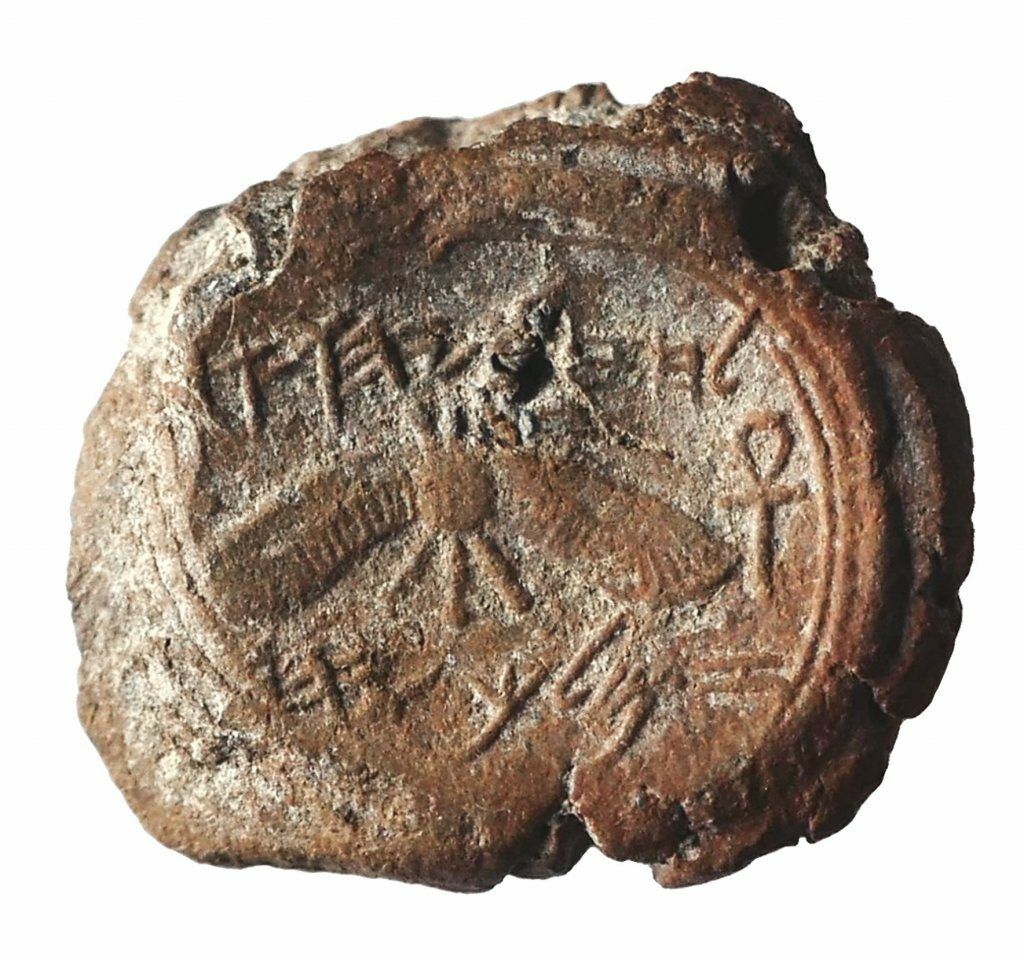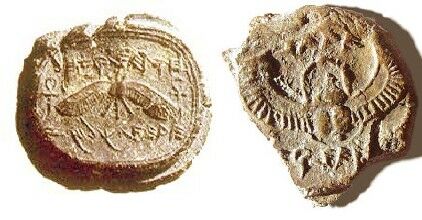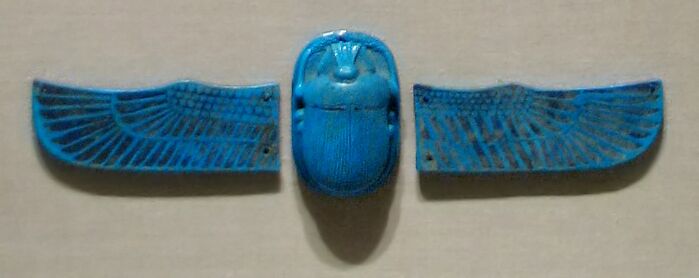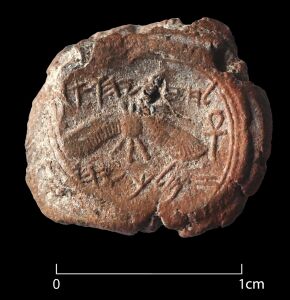Analysis: The Hezekiah Bulla
Ancient fills are treasure troves to those interested in the past—almost nothing provides such a clear picture of a society as a fill or garbage pit, complete with various knickknacks, odds and ends that give a snapshot of how an ancient civilization once functioned. And this particular fill was special. It belonged to the latter years of the Judahite monarchy, and was located squarely within the ancient royal Ophel of Jerusalem.
As one of the archaeological workers emptied a trowelful of dust and rocks into a bucket, little did he know that he had just transported what would be among the greatest discoveries ever made in Jerusalem. One of the greatest single items, surely, ever discovered throughout all Israel. And as that bucket was carefully sifted—first a dry sifting, and then a wet—even after the tiny, precious object buried within was discovered and cleaned, nobody paid it much attention. Nobody fully realized what it really was, what it said. And so for five years, it was boxed away, waiting. As other incredible discoveries came to light from Dr. Eilat Mazar’s Ophel excavations over the intervening years, little did anyone realize that one, far more significant, discovery had already been found, just waiting to be understood.
Finally, five years on, epigraphist Ruth Ben-Aryeh opened up the little box and examined the object more closely. To her surprise, she noticed a subtle part of the ancient script that had been overlooked by the initial reading—a mere dot, a punctuation mark, which separated two words that had originally been presumed to be one. All of a sudden, the real meaning of the script jumped out. It read:
BELONGING TO HEZEKIAH, [SON OF] AHAZ, KING OF JUDAH

Hezekiah’s Existence—Further Evidence
But this small, royal clay seal (or bulla, used for sealing official documents) of King Hezekiah wasn’t the first validation of this king’s existence. It wasn’t even the first bulla found bearing his name. Others had turned up on what is known as the “antiquities market.” But without knowing their provenance, no one could be sure that they weren’t forgeries. Now, straight from the raw earth, within a layer untouched for thousands of years, a genuine seal impression had been uncovered through careful scientific excavation. (Furthermore, this bulla is the first and only one ever discovered by archaeological excavation to have belonged to a king of Judah or Israel.) The discovery of this Hezekiah bulla shows that its parallels on the antiquities market are surely genuine as well—thus providing a great deal more material for proper scientific research and understanding of this king.

The scientific discovery of the Hezekiah bulla was a sensational find (labeled by Dr. Eilat Mazar as her greatest single discovery—and that’s saying something, given all she has found already), providing further irrefutable evidence for a strong, centralized Judahite government operating from the city of Jerusalem. Alongside this artifact, King Hezekiah has been thoroughly attested to in archaeology. Numerous artifacts bear his name—in particular, pieces belonging to King Sennacherib of Assyria.
Sennacherib, mentioned numerous times throughout the Bible, came close to conquering all of Judah while Hezekiah was king. The artifacts remarkably parallel the biblical account. Sennacherib’s successful campaign against the second-most important Judahite city, Lachish (2 Kings 18) was depicted in gratuitous and brutal detail on Sennacherib’s palace walls (currently displayed at the British Museum). Receipt of his subsequent tribute payment from Hezekiah (verses 14-16) has been likewise documented on his prisms. Even the fact that Sennacherib wasn’t able to capture Jerusalem—as miraculously described in the Bible—is also confirmed on his prism annals.
Each of these noteworthy artifacts could have entire books written solely about them. For this article, however, we will focus on King Hezekiah’s bulla. To gain a proper understanding of it, we must compare it to another set of artifacts belonging to Hezekiah’s time period: the lmlk seals.
LMLK
Literally thousands of these lmlk seals have been found. They adorned the handles of specific Judahite vessels. There are five main types of seal design, each bearing some form of either a winged scarab beetle or winged sun. All of them bear the word lmlk, or “to the king”—and on many of them is the name of a different Judahite city: either Hebron, Socoh, Ziph or Mmst (an unknown word that may not necessarily represent a city). Up until now, scientists have been unsure as to which king’s reign the lmlk seals belonged—but Hezekiah was always strongly suspected, due to their dating and possible connection to Assyrian siege preparations. Perhaps the vessels bearing these seals were intended to contain taxes or military rations of some sort. Or perhaps they were used for general administrative purposes during Hezekiah’s reign.

Now, with the scientific discovery of the new Hezekiah bulla, the similarity in symbols makes it obvious that the lmlk seals did belong to King Hezekiah’s reign. We don’t yet know the precise reason for the seal-stamped vessels, but presently it appears they were more for administrative purposes, rather than for war preparations. Is there any significance to the symbols themselves, in relation to Hezekiah’s reign?
Pagan Egyptian Influence?
As described in the Bible, Hezekiah’s reign started out righteously. He began a major purge of idolatry throughout the country. Archaeological evidence for this purge exists—including even the placing of a toilet seat in a pagan room of worship (this act actually has biblical precedent—see 2 Kings 10:26-27).
During the middle part of his reign, things began to go devastatingly wrong for Hezekiah. Sennacherib, at the head of the Assyrian army, began conquering the nation of Judah. Hezekiah’s once strong faith descended to the point of stripping gold from the temple in order to appease the Assyrians. Finally, just as Jerusalem was about to be attacked, Hezekiah turned to God, and the city was miraculously spared.
Evidently, leading up to this time period, the nation of Judah and King Hezekiah had turned away from God. A comment from the invading Assyrian commander, Rabshakeh, gives a clue as to the moral and political climate in Judah to that point (2 Kings 18:20-21; nkjv):
… And in whom do you trust, that you rebel against me? Now look! You are trusting in the staff of this broken reed, Egypt, on which if a man leans, it will go into his hand and pierce it. So is Pharaoh king of Egypt to all who trust in him.
The Assyrians knew that Hezekiah’s allegiance had been with Egypt. It appears that he had developed a league with that pagan nation, “trusting”it rather than God. We learn this not just from the biblical account, but also from artifacts belonging to Hezekiah’s time period. This alliance was one that the prophet Isaiah had warned against (Isaiah 30 and 31).
The winged scarab symbols on Hezekiah’s lmlk seals, as well as those on certain of his personal bullae found on the antiquities market, demonstrate this (see the two above pictures on this article page). The quintessentially Egyptian scarab motif symbolized the gods Ra and Khepri; added wings were a common Egyptian feature.

Hezekiah’s seals followed directly after this pattern. His lmlk seals—and there is wide agreement that at least many of these date prior to the Assyrian invasion, during his “pro-Egyptian” days—often feature four-winged scarabs. And one version of Hezekiah’s personal seal, as found on the antiquities market—surely likewise one of his earlier seals—depicts a scarab with two proud, upturned wings. These images would have circulated around Judah in the years prior to the Assyrian onslaught, as Hezekiah forged ties with the Egyptians, adopting their pagan symbolism.
We know the ensuing biblical story. The Assyrians hammered the nation of Judah, but Jerusalem was miraculously spared after Hezekiah turned to God and prayed for His protection. His reliance was now on God instead of Egypt—and the results showed. Literally. Sennacherib’s prisms boastfully inform us about how he decimated the Judahite cities—but admits that he was only able to “cage” Hezekiah within Jerusalem. He couldn’t conquer the city! (See here for parallel, ancient historical accounts of this.)
So, what of Hezekiah’s bulla uncovered by Dr. Mazar? How does it fit into the scheme of Hezekiah’s life?
An About-face in Design

Sometime soon after Assyria’s invasion, Hezekiah fell gravely ill. The Prophet Isaiah (click here to read about a bulla relating to him) instructed the king to set his house in order, as he was about to die. Hezekiah desperately prayed to God for healing—and as a result, God miraculously healed him. It is just after this time period that the seal design on the new Hezekiah bulla can be attributed.
The imagery on the Hezekiah bulla shows a winged sun. It generally parallels the other main type of lmlk seals, depicting a winged sun, which would likewise fit well with a post-invasion, post-illness period. Evidently, there was a massive about-face in Hezekiah’s preferred motif. His personal bulla is unusual, though, in that the wings on it are swept downward. This symbolism is incredibly rare. No self-respecting king would depict his authority with lowered wings! Yet here we have a unique, humbled expression shown by the lowered wings. Based on the description of Hezekiah’s life, the post-illness period certainly fits well with this seal. Further, there is no scarab depicted on it—instead, the sun is the central feature. Numerous scriptures compare God’s attributes to the sun, and to wings (e.g., Psalm 84:11, Ruth 2:12).

On the sides of the bulla, there are two ankh symbols. While these are Egyptian symbols, they are more generic, and were widely recognized throughout the ancient world as symbolizing life or renewal—again, lending credence to this seal belonging to a healed Hezekiah, given a new lease of life. A modern parallel to the use of such symbolism is the heart shape, which though pagan in origin, has come to universally symbolize “love.”
One further item of speculation: When Hezekiah was promised healing, he asked for a sign. Isaiah informed him that he had two options—the shadow on his father’s sundial would move either forward or backward 10 degrees. Hezekiah, considering that it would require a greater miracle, asked that the shadow move back 10 degrees, which it did (2 Kings 20:8-11). On his bulla, the central sun is depicted with lines emerging above and below. These are generally considered to be rays. But could they perhaps represent the sundial? And could the winged sun also have a dual meaning—symbolizing the star in motion over the sundial? It is interesting to speculate.
So there we have it: A sun; humble, downturned wings; symbols of life and renewal—the symbolism fits beautifully with the later reign of a healed Hezekiah. It also fits closely with a biblical passage, found in the book of Malachi. It’s as if the prophet was directly looking at Hezekiah’s seal when he wrote in Malachi 4:2:
But unto you that hears my name shall the Sun of righteousness arise with healing in his wings ….
